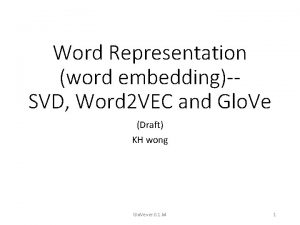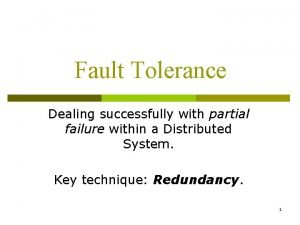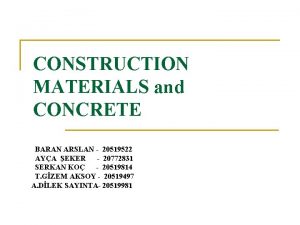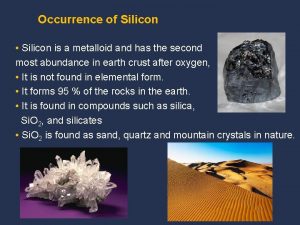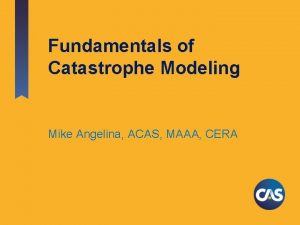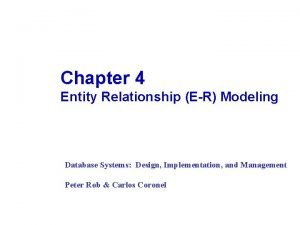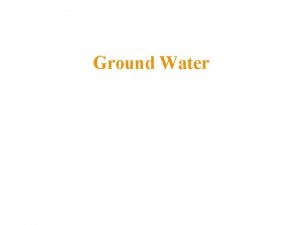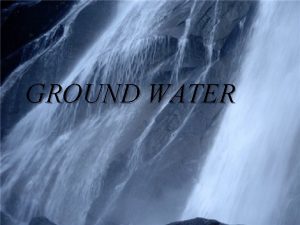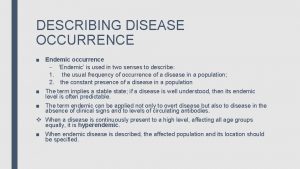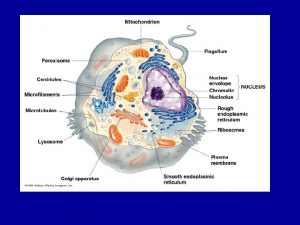Occurrence of Ground Water Ground water occurs when








- Slides: 8

Occurrence of Ground Water • Ground water occurs when water recharges the subsurface through cracks and pores in soil and rock • Shallow water level is called the water table

Recharge Natural • Precipitation • Melting snow • Infiltration by streams and lakes Artificial • Recharge wells • Water spread over land in pits, furrows, ditches • Small dams in stream channels to detain and deflect water 2

Groundwater recharge and discharge • Water enters groundwater systems in recharge areas by hydraulic gradients and hydraulic conductivities, to discharge areas. • The rate of movement of ground water from recharge areas to discharge areas depends on the hydraulic conductivities of the aquifers and on the hydraulic gradients.

Groundwater recharge and discharge • Natural discharge includes: • the flow of springs and the seepage of water into stream channels or wetlands • evaporation from the upper part of the capillary fringe and the low-lying areas. • Discharge is a continuous process as long as groundwater heads are above the level at which discharge occurs. • Between periods of recharge, groundwater heads decline, and the rate of discharge also declines.

Groundwater movement and topography • Groundwater moved by effect of gravity. • The groundwater in the saturated zone moves from interstream areas toward streams or the coast. • The water table usually is a subdued replica of the land surface. • Septic tanks, waste ponds, and other waste-disposal sites should not be located downhill from supply wells.

Groundwater flow net • The equipotential lines, connects points of equal head and represents the height of the water table, or the potentiometric surface of a confined aquifer, above a datum plane.

Groundwater flow net • Flow net. • Flow lines originate in the area of higher heads that indicates the presence of recharge to the aquifer in this area. • The stream gains water from the aquifer due to decreasing head into the stream. The stream is known as effluent stream.

Groundwater flow net • Flow net. • The stream gains water in its headwaters and loses water as it flows downstream. • In the gaining reaches, the equipotential lines form a V pointing upstream; in the losing reach, they form a V pointing downstream, and the stream is called effluent and influent at upstream and downstream respectively.

